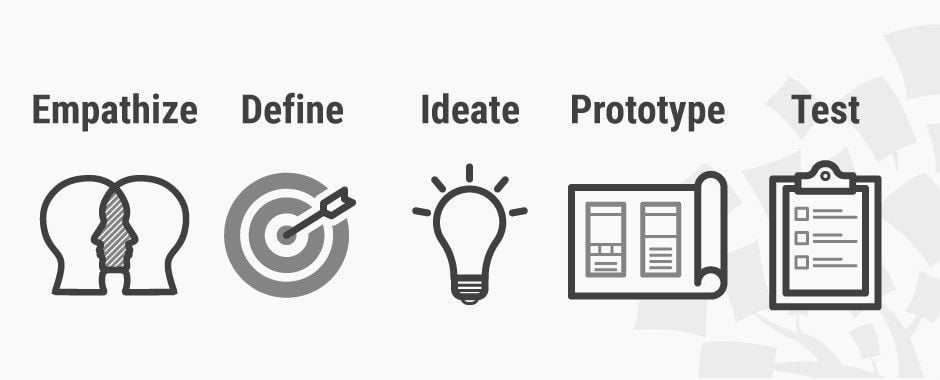As leaders and managers, we usually measure success and productivity on individual projects or work that’s assigned. But chance meetings are crucial for making those amazing things happen that weren’t planned or supposed to happen in the first place.
These things later get recognised in the form of innovation, creativity or new initiatives. So if you are consciously looking to foster either of these in your company or team, you should make sure chance meetings take place.
In some cases, chance encounters, at the workplace or otherwise, could conceive something as big as a groundbreaking product or an entire company. Check out this article to see some examples of chance encounters that actually changed the world!
In this article
Your workplace design can engineer chance encounters
Back in 2014, HBR published an article which spoke about the trend of office designs that contain spaces to actively encourage serendipitous encounters and chance meet-ups.
The article quoted examples from the likes of Facebook, Google & Yahoo redesigning their office spaces to maximise chance encounters. This includes cathedral-sized spaces, huge outdoor areas and even revoking remote work privileges!
Going further back in time, in 2010, when Steve Jobs was planning Apple’s headquarters in Cupertino, he told the architects to design large spaces that maximise chance meetings. Here’s an excerpt from Walter Isaacson’s biography on Steve Jobs –

"Over and over he would come up with new concepts, sometimes entirely new shapes, and make them restart and provide more alternatives ... the building was shaped like a huge winding racetrack made of three joined semicircles around a large central courtyard ... "It permits serendipitous and fluid meeting spaces" he said"
Walter Isaacson Tweet
Jobs had pursued a similar goal in early 2000s when he was the CEO of Pixar – creating an office designed around a central large space to promote unexpected meetings. In other words, he believed serendipity can be and needs to be engineered.
Replicating this in a remote environment isn’t the easiest task, and you’d need to find some ways which work for you. The below section includes suggestions on things you can do to inspire serendipity in remote workplaces. Also see what experienced remote workers have to say about this.
Creating chance meetings in a remote workplace
Be open
When working, most of the work done is known only to the individual doing it and sometimes the team. Other members of the company are shown what is being done only if they need to know it for some reason. In a remote environment, with individuals working at different times of the day and all alone, there is even lesser interaction among the team members, preventing serendipity.
To tackle this, keep your team’s collaboration channels open so that other members can give inputs. Also document everything in a central repository, open to all. This enables other members to find the content and have discussions with the authors of it. Also, implement a system such as a newsfeed or a weekly/ monthly discussion where all the initiatives are announced and other members are free to question them or give inputs.
Ideate together with the team
The third step of the design thinking process, ideation, requires thinking outside the box. For this, brainstorming is quite important. In an office, people can observe how processes take place and question about them or suggest ideas on improving them. Working remotely, this is tough as teammates might not know what’s happening in the rest of the team.
During team meetings, ask questions relevant to a particular topic where you need new ideas and allow an open, free flowing discussion. For example, if you have regular standups, ask a question like ‘What are some things we can do to make the next team birthday party epic?’
When you allow people to give ideas freely, it enables them to bond with each other as well as add value to the company. Such ideas should also be noted down for easy understanding and using the right meeting template is a must.
Announce your work
Similar to being open and allowing teammates to find and ask about content, is working out loud. Announce the work you’ll be doing/ have done in update messages that are accessible to the entire team. In your regular discussions, give a summary of the same. Discuss all initiatives with at least a few concerned people before going ahead with them alone.
Such updates generate an easy way to have discussions on any topic. Also, there may be areas where a certain member of the team has done some research or work in the past and another member is working on it now. Announcing all such things makes sure that people give their inputs if any.
Recurring calls where anyone can jump in
A great way to get people to discuss things and keep ideas flowing is to have recurring calls where any member of the team can jump in. Have a set time every few days where the meeting link is open. Any of the team members who have some free time or simply wish to get their mind off work for a while should be able to jump in on such 15-20 min calls and discuss topics of interest and generate ideas. This also helps employees to refresh their minds in the middle of the workday.

Weekly discussions on various topics
Another cool idea to inspire serendipity is to have weekly discussions where employees can present their thoughts on a particular topic. Pick employees in a random order and allow them to prepare for a short presentation on a topic they are passionate about.
When the presentation is complete, keep some time aside where other team members can ask questions on the presentation and engage in discussion. Also keep in mind that this topic need not be work related. There are various meeting tools you can use to make such discussions even more interesting for all.
You can also have Slack channels or clubs where employees can discuss their personal interests. For example, channels dedicated to books, pets, music, and other such interests where members can share their reviews or simply share images.
Keep these in mind when inspiring serendipity

Keep things optional
The very definition of serendipity are moments that happen by chance. As such, forcing initiatives towards inspiring it upon people may not be the best idea. If an individual feels that they ‘have to’ share an opinion even though a topic doesn’t interest them at all, this can leave a negative impact.
Make sure that employees know that although they should be aware of the things happening in the company, it is not always necessary to participate in events such as outside work discussions. At the same time, also encourage them to try to take interest in such events.
The initiatives should be recurring
With remote work being the future, your company should be in it for the long haul. As such, arrangements for chance encounters should be recurring. As such, employees should know what to expect from them as well as know when they occur. This allows them to accordingly plan out their schedule. They may also have some interesting ideas to discuss and keeping things recurring helps members to prepare in advance.
Final thoughts about engineering serendipity at work
Serendipity, which is rooted in chance cannot be forced. But you can certainly create an environment that cultivates these blissful chance encounters. Innovation, chance-meetings, and creativity are no longer the cornerstone of offices but can be deeply embedded in remote-culture too.
About the serendipitous author
Aside from inspiring teams to live their best remote-working life, Hrishikesh Pardeshi is the Co-founder at Flexiple – a fully remote bootstrapped company with $2 million+ revenue. He’s passionate about remote working and has also built Remote Tools and Remote Clan.





